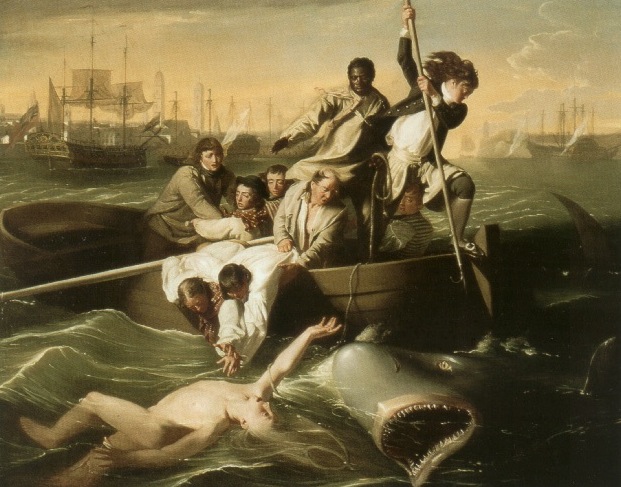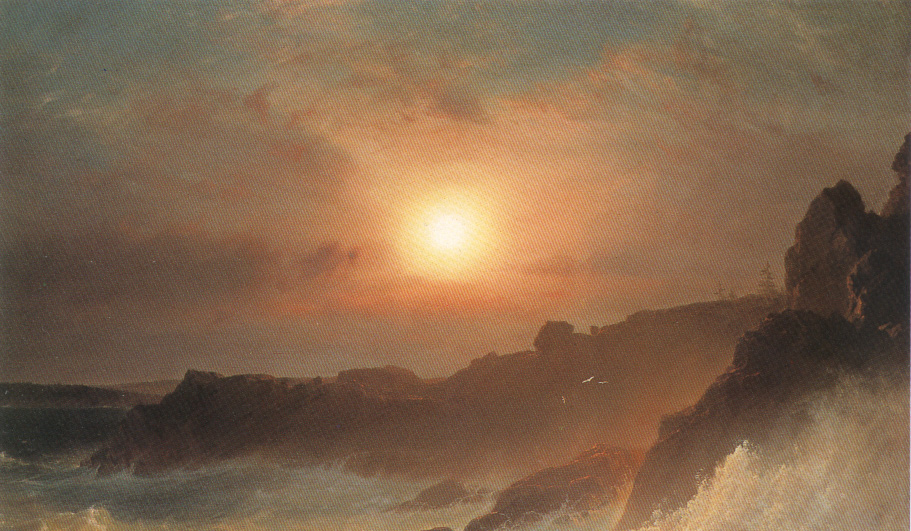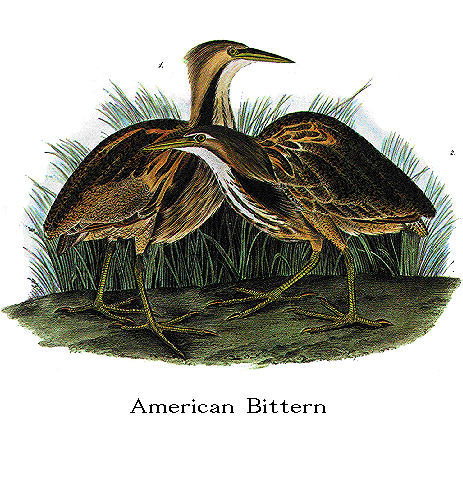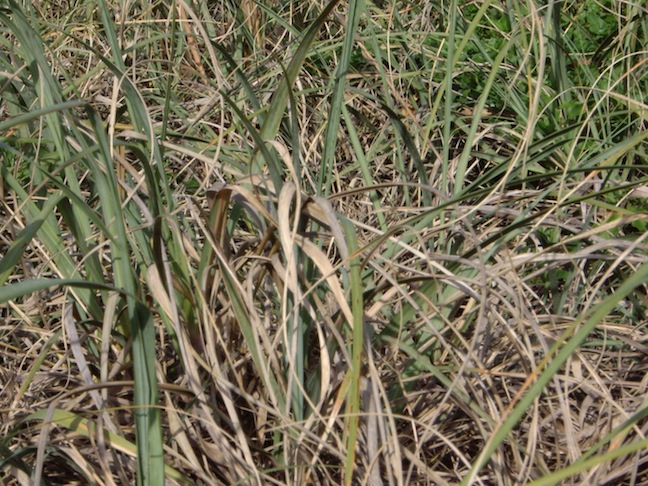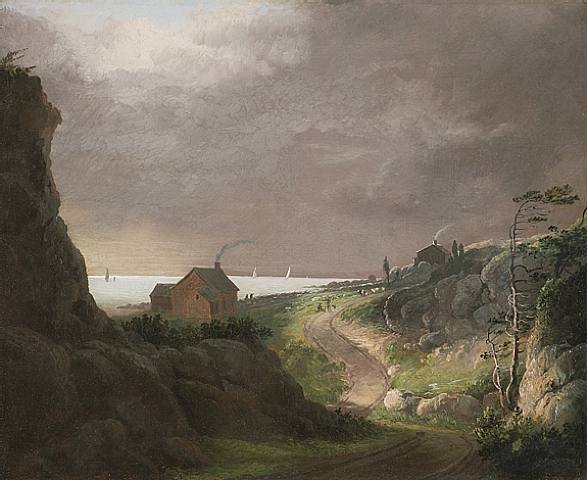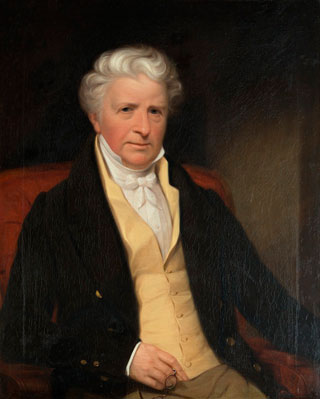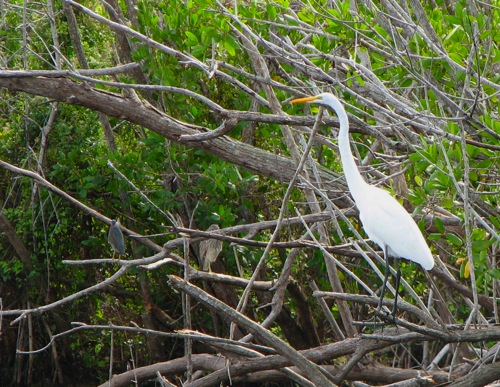 The tension in American Attitudes.
The tension in American Attitudes.
How do we comprehend the nature of the seashore from the perspective of the naturalists?
Siry "The Legacy of the Seashore Naturalists" from Marshes of the Ocean Shore. pages 34-61.
Influences of conflicting beliefs.
"There is at all times and all places a fascination in the seashore"
versus
"completed an otherwise, 'unfinished' landscape."
p. 34
Clarence Glacken, Traces on the Rhodian Shore.
influences | conflicting motives | naturalist is? | people | painting example | paragraph analysis | conclusions
Influences on American coastal development:
Portrait of the New England shore
Duality of motives: [Meaning two reasons that are not obvious for doing something]
- Commercial versus Agrarian values
- small states versus large states interests
- public rights versus private property
- navigation versus reclamation
Tidelands as sovereign land, commons, values of
Naturalists describe the coastal areas as scientific and scenic
One indicator of the idealism, yet simultaneous ignorance of topography was the fundamentals of the land system adopted by the Confederation Congress in 1785 for disposing of land in the new territories of the United States. This is contrasted in the chapter with the idealism and careful attention to facts of the naturalists or practitioners of natural history. This is deliberately juxtaposed with the counter-findings of people who were interested in nature.
The chapter is arranged to create a set of precursors and conditions of ignorance that existed prior to Thoreau and his journal, book on Cape Cod, and essays.
There are important contributors before Thoreau, but all had fragmented views of coastal processes and especially the role of marshes and fisheries in the productivity from the biological wealth of estuaries.
This deliberate contrast by setting one set of ideas on "progress" through settlement and the acquisition of knowledge by surveying and discovery of nature is designed to create an even more significant divergence between ideas of private land ownership as opposed to public interest in the tidelands, the tidal resources, and natural beauty of the rivers, bays, and harbors of the slowly industrializing country.
influences | conflicting motives | naturalist is? | people | painting example | conclusions
Dual motives: dominant attitude versus the naturalist's fascination
coastal wetlands reclaim retain intent drain and farm flood and preserve writers Thomas Jefferson William Bartram statesman Albert Gallatin Samuel Latham Mitchell advocates & artists E. I. du Pont John James Audubon influences | conflicting motives | naturalist is? | people | painting example | conclusions
Naturalist, one who studies nature, such as Gilbert White, John and William Bartram, Charles Darwin, or Samuel L. Mitchell by collecting specimens of plants, animals and rocks (vegetal, animal and the mineral features) from various places. They engaged in nature study to better understand what sorts of organisms lived where and how they survived amidst the changing conditions that affected the water, energy, air or landscape in any terrain or seashore. Sometimes called a practitioner of natural history, a collector of specimens to study, grow in a garden, or send back to expert naturalists such as Carl von Linne, who wrote The Economy of Nature, and was a great taxonomist in Uppsala, Sweden who created the system used today to classify plants and animals.
A naturalist Florida for example was Archie Carr
influences | conflicting motives | naturalist is? | people | painting example | conclusions
The terror of the seas depicted by John Singleton Copley, of a shark attack in Havana harbor.
Those who early recognized that there was something hidden in nature that once revealed may be of great value.
Henry David Thoreau, naturalist, Cape Cod recognized, pollution, ecology and germination of different seeds from forest trees
The breakers at Mount Desert Island, 1863, Frederic Edwin Church; painted seashore scenery along Atlantic coast.Martin Johnson Heade, artist who painted the marshlands of New England.
Edmund Ruffin, natural historian, remarked on forestry, rice plantations, seashore succession along sand dunes.
Sydney Lanier, poet who wrote for the railways about the beauty of nature, thereby attracting visitors to the South after the Civil War. Wrote about the Sea Island marshes of south Georgia.
"Changes in transportation altered the role of estuaries from a nexus in colonial times to a terminus in modern times."
p. 36.
influences | conflicting motives | naturalist is? | people | painting example | conclusions
"To wade sometimes in the marshes where bittern and the meadow hen lurk. . . where only some wilder and more solitary fowl builds her nest."
Henry David Thoreau, pp. 56-57.
The great contributions of the naturalists to the advancement of natural history and study of the seashore was to make the essential biological creatures and the native features of rivers, marshes, coastal promontories and forests visible as a single unit.
As such the artistry of John J. Audubon made fish
and birds an emblem of the early nation's maritime wealth and cultural identity.
Contents of the chapter:
? Widespread changes in landscape
steam engines in transport and reclamation justified by Jeffersonian democracy was the setting
Some writers and artist objected to reclamation
conversion of wetlands for homes,farms, commerce dominated; yet declines in fish, birds and wildlife was evidentpp.34-35.
√ Protectionist sympathies versus Jeffersonianism
roads and canals remained symbols of progress
As the cities grew navigation and waste disposal in coastal wetlands became ever more common
Oliver Evans
steam dredges to keep navigation channels open
Siltation due to accumulated settlement from erosion after settlement and farming was only kept from stopping commerce by steam dredges to remove the mud and silt from the water.pp. 36-37.
Population grew from 3 to 5 million by the 1830s.
• The Land Ordinance of 1785 • promoted the disposal and settlement of land to people.
§ The pubic right to promote commerce and navigation prevailed over private property rights especially in areas subjected to tidal changes.
§ Reservation of certain national interest lands was less successful.
§ Tidelands were not legally the same as the Public Domain
Jefferson's beliefs in limited government was widespread, common, and appealed to most voters (property owners).pp. 38-39.
On the opposite side: that of government having a role to play, Jefferson promoted in 1807 the Coast Survey to map the entire ocean boundaries of the United States.
1816 the survey of New York Bay began, but Congress after the disastrous War of 1812 decided not to fund the survey further in 1818.
The Report on Roads and Canals of 1808 had called for more internal transportation projects, but only the "Nationalists" who followed Jefferson favored such expenses. Instead New York stayed surveyed and then built the Erie Canal linking the Great Lakes to the Hudson River.
Reclamation of tidelands • the land lying below the high tide and above the low tide were reclaimed for manufacturing, commerce and transportation, despite the fact that they remained public land, and land held in trust by the states for all the citizens to use.
Boston, the largest city in America, grew three times larger between 1789 and 1824.
pp. 40-41.
Mill pond dam to run a tidal grist mill to grind grain.
Hancock's heirs profited from selling part of Beacon Hill
This led to an argument over filling of Back Bay after 1813.
Later with railroads from 1844-1861 more tidelands were filled for purposes of transportation and sale to private purchasers.
On the grounds of poor health the State Board of Public Health agreed to filling Back Bay. Docks for shipping and commerce also brought seasonal visitors to seaside resorts.
The tour of seaside resorts led many to fear that the morals of women were being undermined after the 1830s by participating in "men's" pastimes, sports, and bathing!pp.42-43.
"All the loveliness and majesty of the ocean are displayed around the jagged and savage browed cliffs of Nahant. "
William Cullen Bryant in Picturesque America
"A trend in the nineteenth century sentiments referred to as Romanticism in art, literature, music, and beliefs about the wholesome quality of "Nature."
An American William Bartram son of the King's botanist John Bartram was an influence in European and American romantic expression
Bartram described the plants and animals of the Carolinas, Florida and Louisiana as "God's gardens" revealing the divinity of creation and the order of His divine will.
William Bartram through his travels, publications, and research tied together a group of men called naturalists into a "Natural History Circle" who changed the national sentiments about the unsettled lands of the south and west.pp.44-45.
"Bartram associated the the timeless scenic qualities of the seashore with unmatched evocative powers . . . "
"God's wisdom" is the natural world He created
Ambivalence means that there were two competing or conflicting ideas influencing the beliefs of observers of the shores.
Fear led to antipathy and a desire to control the seashores
The belief in the sublime qualities of the oceans near limitless expanse filled others with awe, admiration, and a desire to know God's mind through the study of Nature.
The Artists: Copley, Allston, Homer and Cole.
The artists understood a mood and translated that into images that people could appreciate, even if they could not read and write.pp.46-47.
Martin Johnson Heade, Winslow Homer and landscape artists changed our visions
Herman Melville in literature was drawn to the sea as a character and a symbol, because for him, "water and meditation were wedded,"
Gordon Lord Byron's (romantic movement) poetry and the image of "Eternity"
"reclamation of tidelands continues."
John Jacob Astor's wealth from filling in tidal areas for wharves in New York City after 1810.pp. 48-49.
§ There is a clash of views emerging: the desire to protect comes into competition with "materialist values" to "care for their property as they saw fit."
Private property rights and limited government versus public property and protection of wildlife and fisheries as national trusts.
These opposite ideas competed in the nation:The prevailing, dominant belief promoting reclamation for private property and protection for wildlife and scenery for the public good
Samuel Latham Mitchell (portrait above) in 1815 wrote The Fishes of North America, and advocated herring protection, because of their commercial value as a food fishery.
He also argued to protect the disappearing Long Island Heath Hen
In Mitchell and Audubon there was a coming together of artistic, literary and scientific sentiments -- that is belief in the need for refuges for fish and wildlife also promoted scenic protection of the seashore and its marshlands, beaches and cliffs.
pp. 50-51.
§ John James Audubon's paintings of birds
made the wading birds of the marshes and seashores part of the national heritage of wildlife and wild scenery and subjects for natural historians.
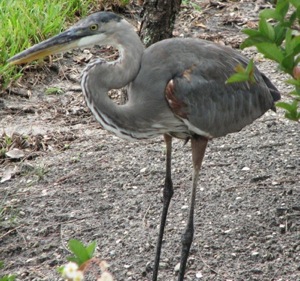
Great Blue or Louisiana Heron compare to Audubon's painting.
Characterization of Florida as a garden
There is ambiguity between early ideas of Bartram and later ideas of Audubon -- both Americans -- exhibited two sides of wildlife slaughter and wildlife saving ideals.
pp. 52-53.
§ Edmund Ruffin in the south and Henry David Thoreau in the north show the national appeal of nature study and remarkable new findings about seashore succession of vegetation, and the study of botany that led to ecology
Zones and the importance of the loblolly pine trees on sea islands
oyster reefs adversely affected by high salinity in the Carolina estuaries, causes of malaria associated with fresh and not salt water.pp. 54-55.
§ The problem with private property in diked or reclaimed, or lands behind levees was fully articulated --that is explained by Edmund Ruffin.
The Sacramento floods in the 1850s proved Ruffin correct but was 3000 miles away from Carolina
Ruffin realized "nearly the whole country was in the state of nature" relating dams to artificial floods.
Henry David Thoreau, 1849 Cape Cod -- a study in history and ecology
Thoreau understood the decline in oysters, fish, forests and water quality of the cape due to settlements, not superstitions
Thoreau realized the deep relation among people and life: "We, too, are the product of sea slime. . . "pp. 56-57.
§ Thoreau's sentiments are not shared, are uncommon but reveal how ducks and salicornia marshes need one another and how dams block the shad (a good food fish) from spawning upstream on the Merrimack River
He represents and later uses the term an ecological understanding of natural relations -- that is how one creature relates to the conditions of success for other creatures in the "Economy of Nature."
Thoreau, Seybert and Ruffin are compared and contrasted
"intuitive grasp of the necessity of marshes," by Adam Seybert is sustained by evidence from northern and southern coastal areas in terms of geography, zones, and ecology.
The poetry of Sydney Lanier after the Civil War in 1878pp. 58-59.
§ verses from the Marshes of Glynn in the Georgia Sea Islands in 1878.
Paintings of Martin Johnson Head, writings of William Cullen Bryant that captured the picturesque qualities of salt marshes
"a fonder fascination for marshes emerged"
a sophisticated ambivalence for the utility of and the scenic beauty of coastal wetlands existed
• that means people could hold different, competing ideas but also understand that if you want oysters, shad and less malaria you need salt and freshwater to mix and you need tidal marshes for that to happen; even if you are taking tidal marshes and turning these wetlands into dryland by reclamation.
these ideas were the foundation on which 20h century scientific discoveries would reveal the surprising necessity of these often misunderstood tide bound stretches of grass, mud and putrid smelling air.pp. 60-61.
Much like the study of the fish, forests, fowl and vegetation of the shore, the poetry, and the artistry of the seashore brought to the attention of the Republic the unsurpassed scenic and utilitarian values of coastal America and its tidal seas. But the fragmentation of knowledge impeded an understanding of the productive functions of estuaries, salt marshes, and tides with regards to the coast resources ; especially fisheries in the early nation and throughout the 19th century..
antipathy -- the feeling of a deep seated dislike or aversion to something based on emotions.
Frederic Edwin Church's complete works of art.
reclamation - meaning to bring what is called "waste land" or lands that are too dry or too wet and covered with water to a condition of cultivation for crops, orchards, or grazing. To make wetland dry, or irrigate dry, arid, or desert land.
influences | conflicting motives | naturalist is? | people | painting example | commerce
Date: March 31 2008 & added material and pictures February 6, 2015.

.gif)

